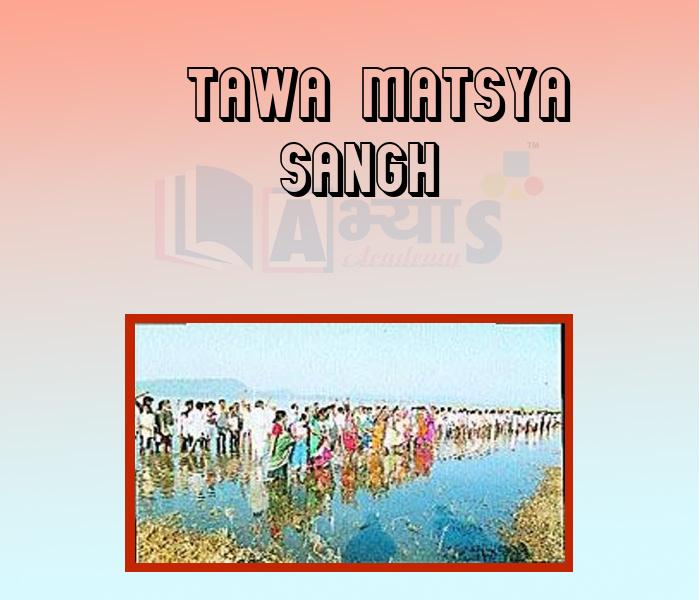Tawa Matsya Sangh

Tawa Matsya Sangh
Tawa Matsya Sangh: When dams are built or forest areas declared sanctuaries for animals, thousands of people are displaced. Whole villages are uprooted and people are forced to go and build new homes, start new lives elsewhere. Most of these people are poor. In urban areas too, bastis in which poor people live are often uprooted. Some of them are relocated to areas outside the city. Their work as well as their children’s schooling is severely disrupted because of the distance from the outskirts of the city to these locations. This displacement of people and communities is a problem that has become quite widespread in the country. People usually come together to flight against this. There are several organizations across the country fighting for the rights of the displaced.
Tawa Matsya Sangh: a federation of fisher worker’s cooperatives –an Organization fighting for the Satpura forest in Madhya Pradesh.
Originating in the Mahadeo hills of Chindwara district, the Tawa flows through Betul, before joining the Narmada in Hoshangabad.
The Tawa dam began to be built in 1958 and was completed in 1978. It submerged large areas of forest and agricultural land. The forest dwellers were left with nothing. Some of the displaced people settled around the reservoir and apart from their meager farms found a livelihood in fishing. They earned very little. In 1994, the government gave the rights for fishing in the Tawa reservoir to private contractors. These contractors drove the local people away and got cheap labour from outside. The contractors began to threaten the villagers. Who did not want to leave, by bringing in hoodlums? The villagers stood united and decided that it was time to set up an organization and do something to protect their rights.
The newly formed Tawa Matsya Sangh( TMS) organized rallies and a chakka jam ( road blockade), demanding their right to continue fishing for their livelihood. In response to their protests, the government created a committee to assess the issue. The committee recommended that fishing rights be granted to the villagers for their livelihood. In 1996, the Madhya Pradesh government decided to give to the people displaced by the Tawa dam the fishing rights for the reservoir. A five- year’s lease agreement was signed two months later. On January 2, 1997, people from 33 villages of Tawa started the New Year with the first catch.
Students / Parents Reviews [10]
My experience with Abhyas is very good. I have learnt many things here like vedic maths and reasoning also. Teachers here first take our doubts and then there are assignments to verify our weak points.

Shivam Rana
7thMy experience was very good with Abhyas academy. I am studying here from 6th class and I am satisfied by its results in my life. I improved a lot here ahead of school syllabus.

Ayan Ghosh
8thAbout Abhyas metholodology the teachers are very nice and hardworking toward students.The Centre Head Mrs Anu Sethi is also a brilliant teacher.Abhyas has taught me how to overcome problems and has always taken my doubts and suppoeted me.

Shreya Shrivastava
8thAbhyas is a complete education Institute. Here extreme care is taken by teacher with the help of regular exam. Extra classes also conducted by the institute, if the student is weak.

Om Umang
10thMy experience with Abhyas academy is very good. I did not think that my every subject coming here will be so strong. The main thing is that the online tests had made me learn here more things.

Hiya Gupta
8thIt has a great methodology. Students here can get analysis to their test quickly.We can learn easily through PPTs and the testing methods are good. We know that where we have to practice

Barkha Arora
10thOne of the best institutes to develope a child interest in studies.Provides SST and English knowledge also unlike other institutes. Teachers are co operative and friendly online tests andPPT develope practical knowledge also.

Aman Kumar Shrivastava
10thIt was a good experience with Abhyas Academy. I even faced problems in starting but slowly and steadily overcomed. Especially reasoning classes helped me a lot.

Cheshta
10thIt was good as the experience because as we had come here we had been improved in a such envirnment created here.Extra is taught which is beneficial for future.

Eshan Arora
8thI have spent a wonderful time in Abhyas academy. It has made my reasoning more apt, English more stronger and Maths an interesting subject for me. It has given me a habbit of self studying











